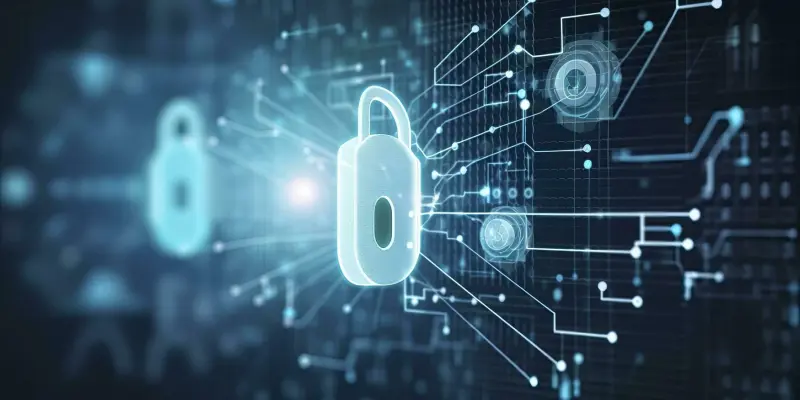Educational institutions globally are facing a surge in sophisticated cyber-attacks, positioning them as prime targets for cybercriminals. Recent reports indicate that the education sector ranked as the third-most targeted industry, emphasizing the urgent need for robust cybersecurity measures in academic settings. This increasing trend in cyber threats toward schools is driven by their extensive networks, valuable personal and research data, and typically limited security resources, making them vulnerable to various malicious activities.
Understanding the Threat Landscape
Attack Vectors and Vulnerabilities
Between April and September, educational institutions were among the top three most attacked industries by China-aligned APT groups. They were also the top two targets for North Korea-aligned actors and within the top six for Iran and Russia-aligned threat operators. Recent data from the UK revealed that 71% of secondary schools and 97% of universities experienced significant security breaches in the past year, a rate much higher compared to the 50% seen in businesses. In the US, over one cyber incident per school day was recorded from 2025, highlighting the critical vulnerability of educational institutions.
ESET researchers have identified several key factors contributing to these security weaknesses. Schools’ networks are notably porous due to thousands of users, encompassing students, faculty, and administrative staff. Moreover, schools house repositories of monetizable data, including personally identifiable information and valuable research. Limited security resources only exacerbate these issues, leaving them susceptible to attacks both from financially motivated cybercriminals and state-sponsored espionage operations targeting intellectual property and sensitive information.
Advanced Persistent Threat Groups
Advanced Persistent Threat (APT) groups, such as the Iran-aligned Ballistic Bobcat (APT35 or Mint Sandstorm), have been documented using sophisticated evasion techniques. One notable method involves process injection, where malicious code is inserted into legitimate system processes to avoid detection. Phishing campaigns are also a common tactic used by these groups to gain initial access, often leveraging QR codes that appear as legitimate educational materials. Once inside the network, the sophisticated malware employs advanced evasion tactics, ensuring it can bypass endpoint detection and response (EDR) solutions. These advanced tactics enable the malware to maintain persistence and operate stealthily within the school’s digital systems. This approach is particularly concerning, as it allows for the exfiltration of sensitive data and potentially the deployment of ransomware. Since 2018, ransomware attacks have caused an estimated $2.5 billion in downtime losses for US educational institutions. The significant financial and operational impact underscores the critical need for strengthened cybersecurity defenses in academic environments.
Strengthening Cybersecurity Measures
Implementing Advanced Security Protocols
To combat the rising threat landscape, schools must prioritize the implementation of advanced security protocols. This includes deploying comprehensive security information and event management (SIEM) solutions to monitor and analyze potential threats across vast networks. SIEM solutions can provide real-time insights, enabling timely responses to potential cyber threats. Additionally, integrating multi-factor authentication (MFA) for all users can significantly reduce the risk of unauthorized access, adding an essential layer of security.
Regular vulnerability assessments and penetration testing can help identify and address security weaknesses. These tests simulate cyber-attacks to evaluate the effectiveness of existing security measures and uncover potential vulnerabilities before they can be exploited by malicious actors. By periodically conducting these assessments, educational institutions can maintain a proactive stance in safeguarding their digital assets against evolving cyber threats.
Educating and Training the Community
Raising cybersecurity awareness among students, faculty, and staff is another crucial measure for defending against cyber-attacks. Educational institutions should invest in comprehensive training programs that teach the school community about recognizing phishing attempts, securing personal devices, and adhering to best practices in digital safety. Simulated phishing exercises can help reinforce these lessons, enabling users to identify and respond to malicious attempts more effectively.
Creating a culture of cybersecurity within the academic environment involves continuous education and clear communication regarding the importance of cybersecurity protocols. Regular updates and reminders about potential cyber threats can further enhance the community’s awareness and vigilance. By fostering a security-conscious culture, educational institutions can empower their members to be the first line of defense against cyber-attacks.
Future Considerations and Actions
Adapting to Evolving Threats
As cyber threats continue to evolve, educational institutions must remain adaptive and resilient in their cybersecurity strategies. This involves staying informed about the latest cyber threats and advancements in cybersecurity technology. Schools should collaborate with cybersecurity experts and industry partners to enhance their security frameworks and share valuable threat intelligence. Investing in cybersecurity infrastructure, such as artificial intelligence-driven threat detection systems, can offer advanced protection against sophisticated cyber-attacks. These systems can analyze vast amounts of data in real-time, detecting anomalous activities indicative of potential cyber threats. By embracing cutting-edge technologies, schools can strengthen their defense capabilities and stay ahead of evolving cyber threats.
Legislative and Policy Implications
Educational institutions worldwide are increasingly grappling with sophisticated cyber-attacks, making them prime targets for cybercriminals. Recent studies highlight that the education sector is the third-most targeted industry for cyber threats, underscoring the pressing need for enhanced cybersecurity measures within academic environments. This disturbing rise in cyber threats directed at schools is propelled by several factors: their vast network infrastructures, the valuable personal and research data they possess, and often limited cybersecurity resources. These elements collectively make educational institutions particularly susceptible to a range of malicious cyber activities. To safeguard their sensitive data and ensure a secure learning environment, schools must prioritize investing in advanced cybersecurity solutions and training for their staff and students. As the digital landscape evolves, robust protections and proactive strategies are essential to defend against the ever-increasing and sophisticated cyber threats targeting the academic community.

